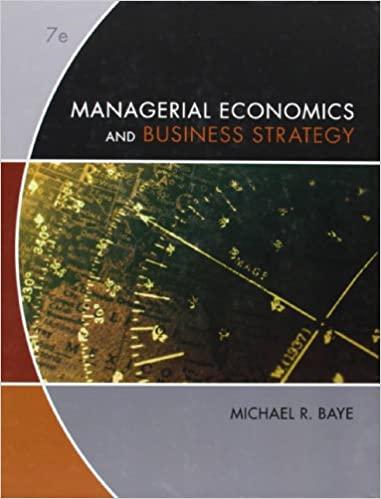20. According to CNN, two dairy farmers challenged the legality of the funding of the Got Milk?...
Question:
20. According to CNN, two dairy farmers challenged the legality of the funding of the “Got Milk?” campaigns. They argued that the “Got Milk?” campaigns do little to support milk from cows that are not injected with hormones and other sustainable agriculture products, and therefore violate their (and other farmers’)
First Amendment rights. The 3rd U.S. Circuit Court of Appeals agreed and concluded that dairy farmers cannot be required to pay to fund the advertising campaigns. One of the obvious backlashes to the National Dairy Promotion and Research Board is reduced funding for advertising campaigns. To assess the likely impact on milk consumption, suppose that the National Dairy Promotion and Research Board collected data on the number of gallons of milk households consumed weekly (in millions), weekly price per gallon, and weekly expenditures on milk advertising (in hundreds of dollars). These data, in forms to estimate both a linear model and log-linear model, are available online at www.mhhe.com/baye7e in a file named Q20.xls. Use these data to perform two regressions: a linear regression and a log-linear regression. Compare and contrast the regression output of the two models. Comment on which model does a better job fitting the data. Suppose that the weekly price of milk is $3.10 per gallon and the National Dairy Promotion and Research Board’s weekly advertising expenditures falls 25 percent after the court’s ruling to $100
(in hundreds). Use the best-fitting regression model to estimate the weekly quantity of milk consumed after the court’s ruling.
21. Afew years ago, the Federal Communications Commission (FCC) eliminated a rule that required Baby Bells to provide rivals access and discounted rates to current broadband facilities and other networks they may build in the future.
Providers of digital subscriber lines (DSL) that use the local phone loop are particularly affected. Some argue that the agreement will likely raise many DSL providers’ costs and reduce competition. Providers of high-speed Internet services utilizing cable, satellite or wireless technologies will not be directly affected, since such providers are not bound by the same facilities-sharing requirements as firms using the local phone networks. In light of the FCC ruling, suppose that News Corp., which controls the United States’ largest satellite-to-TV broadcaster, is contemplating launching a Spaceway satellite that could provide highspeed Internet service. Prior to launching the Spaceway satellite, suppose that News Corp. used least squares to estimate the regression line of demand for satellite Internet services. The best-fitting results indicate that demand is
(in thousands), where Psat is the
![]() price of satellite Internet service, PDSL is the price of DSL Internet service, and Pcable is the price of high-speed cable Internet service. Suppose that after the FCC’s ruling the price of DSL, PDSL, is $30 per month and the monthly price of high-speed cable Internet, Pcable, is $30. Furthermore, News Corp. has identified that its monthly revenues need to be at least $14 million to cover its monthly costs. If News Corp. set its monthly subscription price for satellite Internet service at $50, would its revenue be sufficiently high to cover its cost? Is it possible for News Corp. to cover its cost given the current demand function? Justify your answer.
price of satellite Internet service, PDSL is the price of DSL Internet service, and Pcable is the price of high-speed cable Internet service. Suppose that after the FCC’s ruling the price of DSL, PDSL, is $30 per month and the monthly price of high-speed cable Internet, Pcable, is $30. Furthermore, News Corp. has identified that its monthly revenues need to be at least $14 million to cover its monthly costs. If News Corp. set its monthly subscription price for satellite Internet service at $50, would its revenue be sufficiently high to cover its cost? Is it possible for News Corp. to cover its cost given the current demand function? Justify your answer.
Step by Step Answer:







